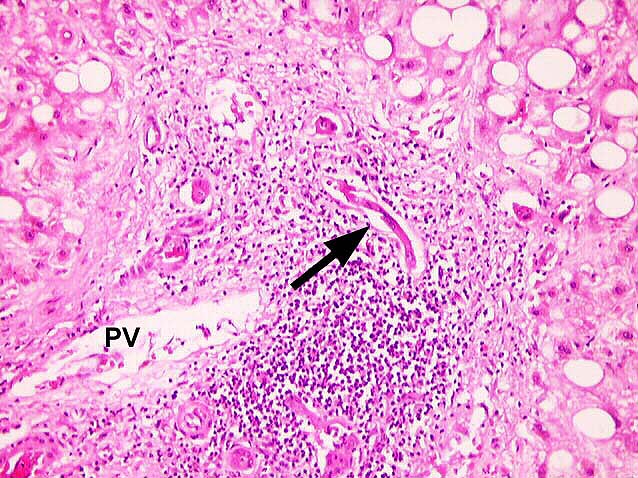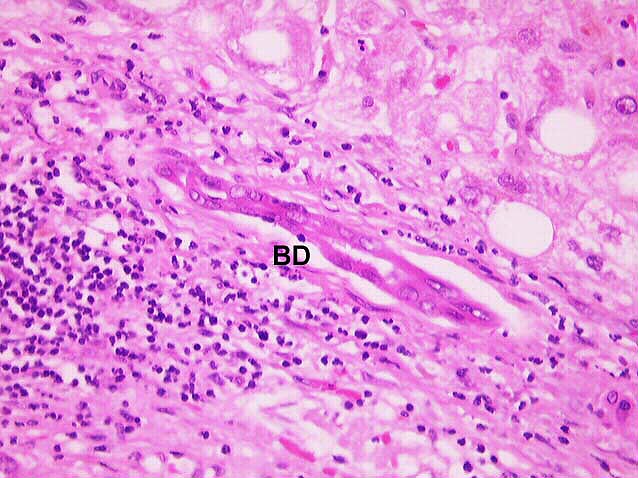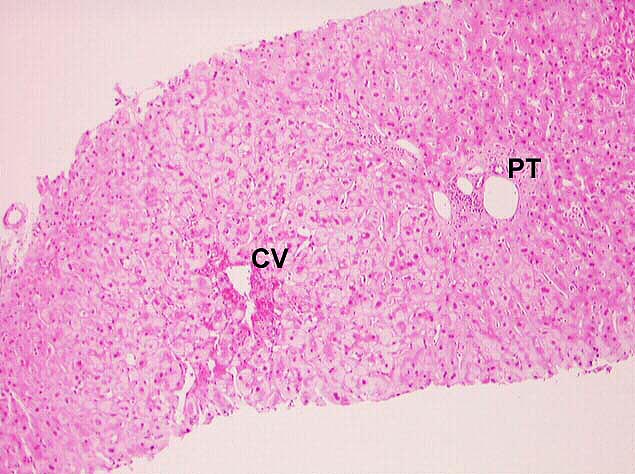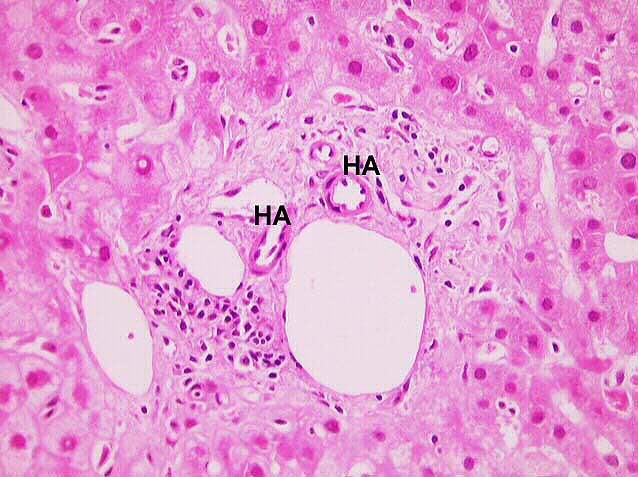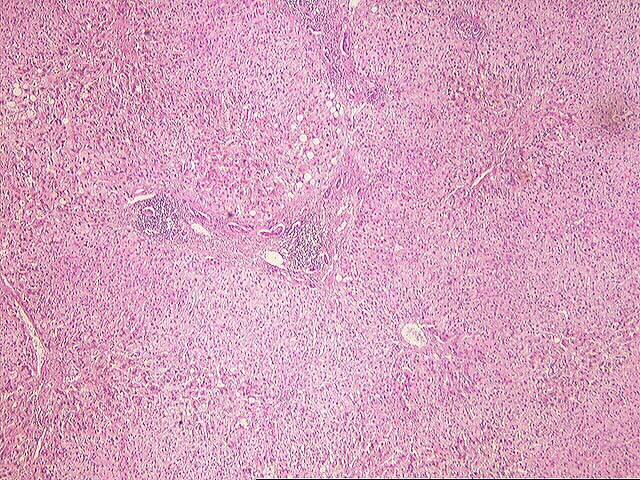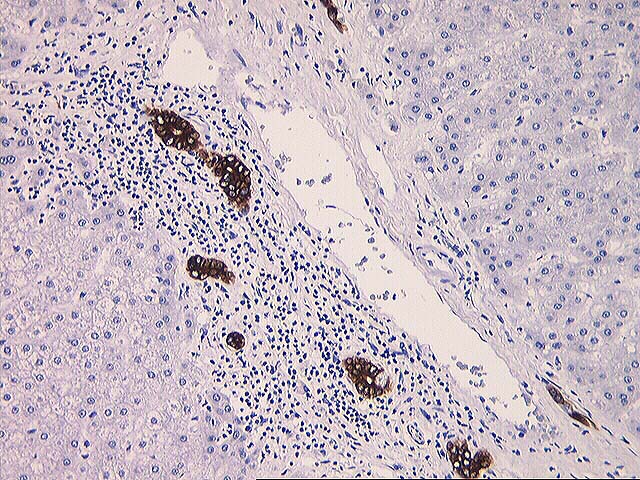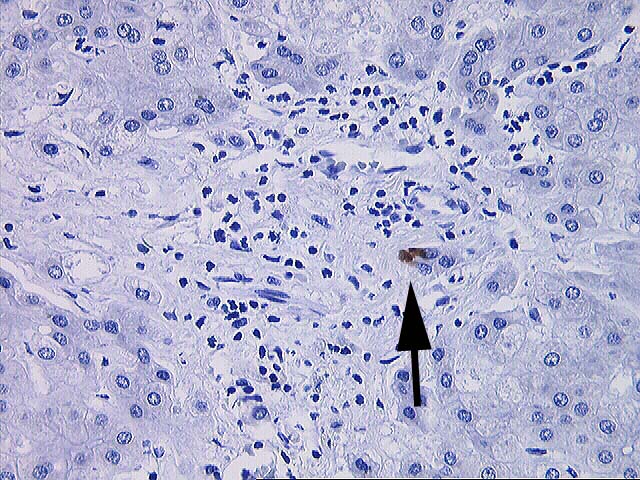In the early phases of chronic liver allograft rejection,
there is usually no architectural distortion and the portal
inflammation is mild. However, duct damage in the form of atrophy/pyknosis is usually severe
and widespread, with or without bile duct loss. If duct loss is present, it involves < 50 % of the portal tracts.
If portal inflammation is present, it is usually concentrated around the small bile ducts (ductulocentric),
but perivenular localization can also be seen. This often occurs in association with perivenular hepatocyte dropout, cholestasis
and/or hepatocyte ballooning. If perivenular fibrosis is present, it is mild and foam cells are usually absent.
Interestingly, the inflammation in the triads usually persists as long as there are remaining biliary epithelial cells:
once all of the bile duct cells have been destroyed, it often subsides.
